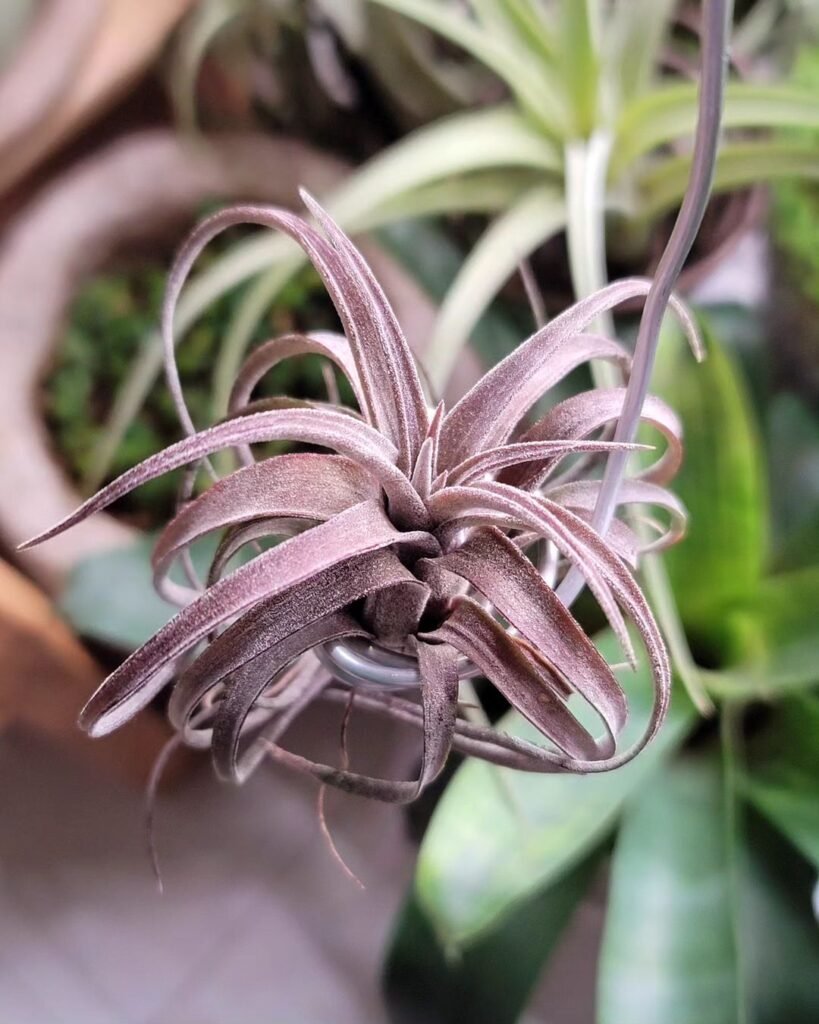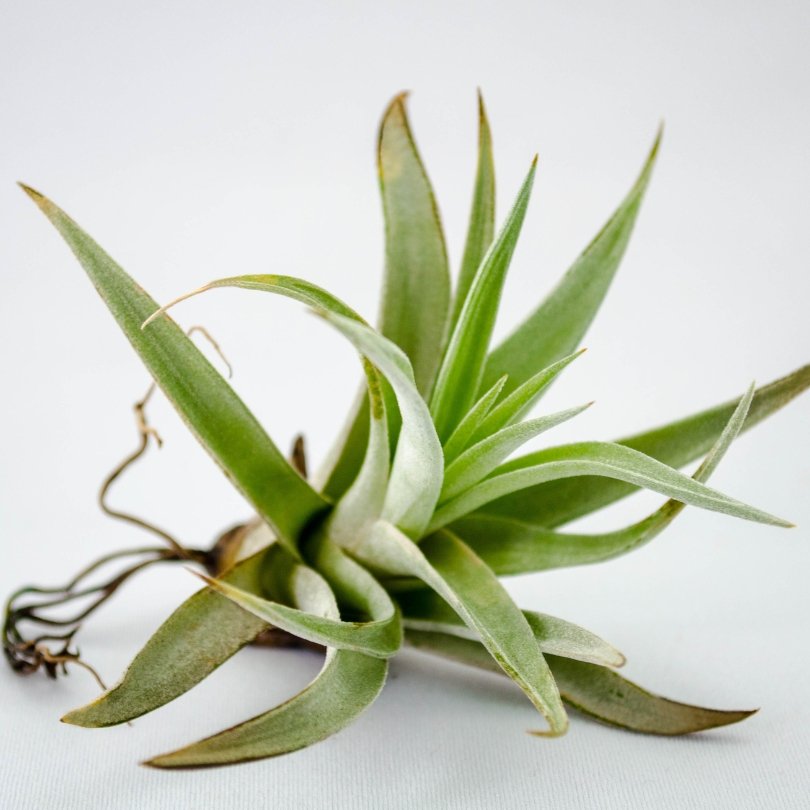Air plants, scientifically known as Tillandsia, are fascinating botanical wonders that don’t require soil for growth. These unique plants, often epiphytic, thrive by absorbing nutrients through their leaves. Proper care is essential to ensure their well-being and vibrant appearance. In this guide, we will delve into the intricacies of Air plant care, covering everything from selecting the right species to showcasing your thriving collection.
Brief Overview of Air Plants
Air plants, a subset of the Bromeliad family, have gained popularity as low-maintenance and visually appealing additions to homes. Their distinct appearance and the ability to grow without soil make them a favorite among plant enthusiasts.
Importance of Proper Care
While air plants are resilient, they do require specific care to flourish. Neglecting their needs can lead to issues like dehydration, pest infestations, and diminished vibrancy. In this comprehensive guide, we’ll explore the various aspects of caring for air plants.
Understanding Air Plants

Definition and Types
Air plants, belonging to the genus Tillandsia, come in numerous species, each with its unique features. Understanding the types of air plants is crucial for providing tailored care.
Unique Characteristics
These plants boast unique features such as trichomes, which aid in water absorption, and a remarkable ability to adapt to various environments. Appreciating these characteristics enhances our ability to cater to their specific needs.
Selecting the Right Air Plants

Consideration of Species
Different air plant species have distinct care requirements. Learning about the specific needs of your chosen species ensures a thriving plant.
Checking for Health and Vitality
Selecting a healthy air plant is the first step towards successful care. We’ll explore how to identify signs of vitality and avoid potential issues.
Light Requirements

Importance of Light for Air Plants
Light is a vital element for air plants as it contributes to their metabolic processes. We’ll delve into the significance of light and its role in promoting vibrant foliage.
Ideal Light Conditions
Discover the optimal light conditions for air plants and how to create an environment that fosters their growth. Additionally, we’ll discuss the importance of shielding them from direct sunlight.
Avoiding Direct Sunlight
While air plants need light, excessive sunlight can be harmful. We’ll provide practical tips on protecting your plants from the harsh effects of direct sunlight.
Watering Techniques

The Crucial Role of Water
Water is a lifeline for air plants, and understanding their water needs is fundamental to their well-being.
Proper Watering Frequency
We’ll guide you on establishing a suitable watering schedule, considering factors like humidity and temperature.
Different Methods of Watering
Explore various watering methods, from soaking to misting, and learn when each is most appropriate for your air plants.
Air Circulation
Significance of Air Circulation
Air plants thrive on good air circulation, and we’ll discuss the reasons behind this and how to enhance air flow around your plants.
Tips for Improving Air Circulation
Simple strategies for improving air circulation in your living space will contribute to the overall health of your air plants.
Temperature Considerations
Ideal Temperature Range
Understanding the temperature preferences of air plants is crucial for their survival. We’ll explore the optimal temperature range and how to maintain it.
Protecting Air Plants from Extreme Temperatures
Air plants are sensitive to extreme temperatures. Learn how to shield them from both cold snaps and scorching heat.
Nutritional Needs
Understanding Air Plant Nutrition
While air plants absorb nutrients from the air, they can benefit from supplemental nutrition. We’ll explore the nutritional needs of air plants and how to provide them.
Fertilization Tips and Recommendations
Discover the right fertilizers and application methods to ensure your air plants receive the nutrients they require for optimal growth.
Mounting and Display Options
Various Ways to Mount Air Plants
Explore creative and practical methods for mounting air plants, from traditional options like driftwood to more unconventional choices.
Creative Display Ideas
Enhance the aesthetic appeal of your space by incorporating unique display ideas for your air plants.
Common Mistakes to Avoid
Overwatering Pitfalls
Avoid the common pitfall of overwatering, which can lead to root rot. Learn how to strike the right balance for healthy air plants.
Issues with Inadequate Light
Recognize the signs of insufficient light and understand how to rectify this common problem.
Choosing the Wrong Mounting Method
Selecting an inappropriate mounting method can hinder air plant growth. We’ll guide you on making the right choice for your specific species. Check this article Mounting and Displaying your Air Plants.
Pest Prevention and Management
Identifying Common Pests
Recognize common pests that can affect air plants and learn preventive measures to keep them at bay.
Natural Remedies for Pest Control
Explore natural and eco-friendly ways to manage pests without harming your air plants or the environment.
Pruning and Grooming
Importance of Regular Pruning
Regular pruning is essential for maintaining the health and appearance of air plants. Learn the proper techniques and frequency here.
Proper Grooming Techniques
Discover grooming practices that contribute to the longevity and vitality of your air plants.
Recognizing Signs of Stress
Understanding Stress Indicators
Air plants can exhibit signs of stress. We’ll help you identify these indicators and guide you on addressing the underlying issues.
Addressing Stressed Air Plants
Once stress signs are recognized, take appropriate steps to alleviate stress and promote recovery in your air plants.
Seasonal Care
Adjusting Care for Different Seasons
Understand how seasonal changes impact air plant care and adjust your routine accordingly.
Winter Care Tips
Winter poses unique challenges for air plants. Learn specific care tips to ensure their well-being during the colder months.
Sharing Your Air Plants Care Success
Engaging with the Air Plant Community
Connect with fellow air plant enthusiasts, share your experiences, and gain valuable insights into successful care practices.
Showcasing Your Healthy Air Plants
Celebrate the results of your dedicated care by showcasing your thriving air plant collection. Share your success with others and inspire fellow plant lovers.
Conclusion
Taking care of air plants requires a balance of light, water, and proper environmental conditions. By understanding their unique needs and following the guidelines outlined in this comprehensive guide, you can ensure the health and vibrancy of your air plants. Remember, each plant is unique, so observe and adjust your care routine accordingly.
FAQs
- Can air plants survive indoors without natural light?
- While air plants can adapt to indoor conditions, they still need access to natural light. Consider placing them near a window with filtered sunlight for optimal growth.
- How often should I fertilize my air plants?
- Fertilize your air plants every 2-4 weeks during the growing season (spring to fall). Use a diluted, balanced fertilizer to provide essential nutrients.
- What are the common signs of overwatering air plants?
- Overwatering signs include wilting, yellowing, or a musty odor. Adjust your watering frequency and ensure proper drying between watering sessions.
- Can I use tap water for watering air plants?
- It’s best to use filtered or rainwater for watering air plants, as tap water may contain minerals harmful to their health. If using tap water, let it sit for a day to allow chlorine to dissipate.
- How do I revive a stressed air plant?
- To revive a stressed air plant, ensure it receives proper light, adjust watering frequency, and consider providing a diluted fertilizer. Trim away any dead or damaged parts carefully.
Pingback: Whale Fin Snake Plant Care Guide - Gardener's School
Pingback: The Sleep Oasis: 5 Bedroom Plants for Better Sleep
Pingback: Creative Ideas for DIY Indoor Plant Projects
Pingback: Air Plant Varieties: Discovering the Diversity of Tillandsia
Pingback: 25 Stunning Terrarium Plants to Liven Up Your Home - Gardener's School
Pingback: Alocasia Odora Care: Your Comprehensive Guide -
Pingback: How to Grow and Care for Alocasia Frydek - Gardener's School
Pingback: 5 House Plants That Can Improve Your Sleep - Gardener's School
Pingback: 15 Best Aesthetic Plants for Your Home and Garden